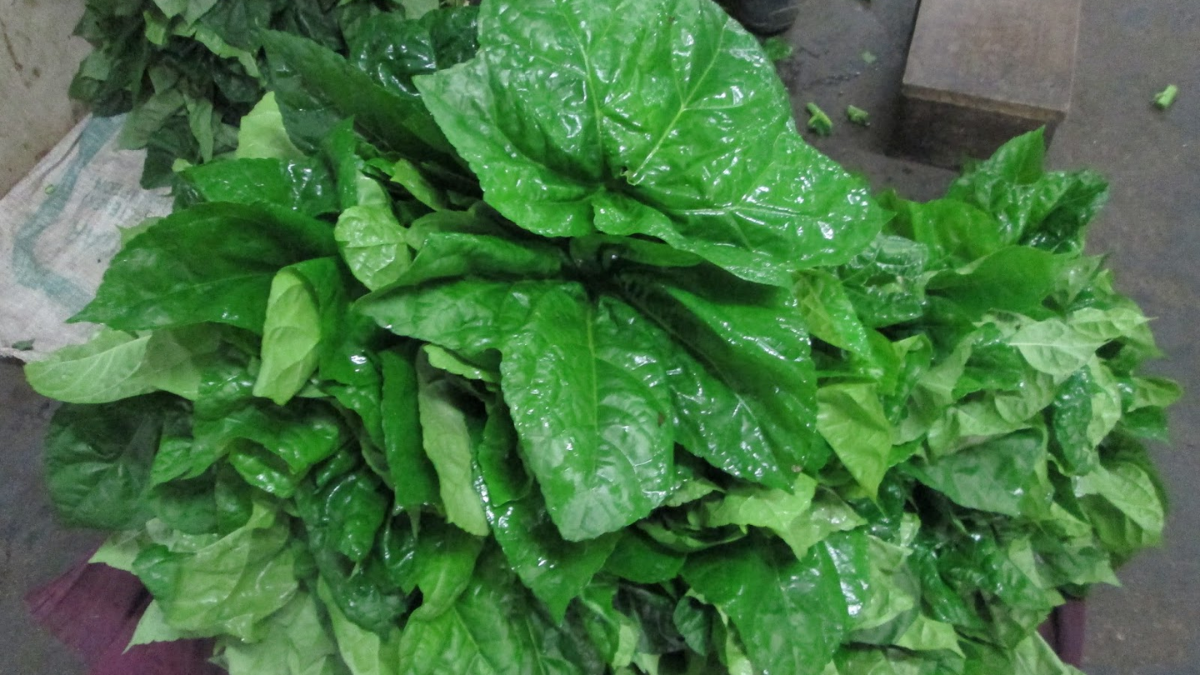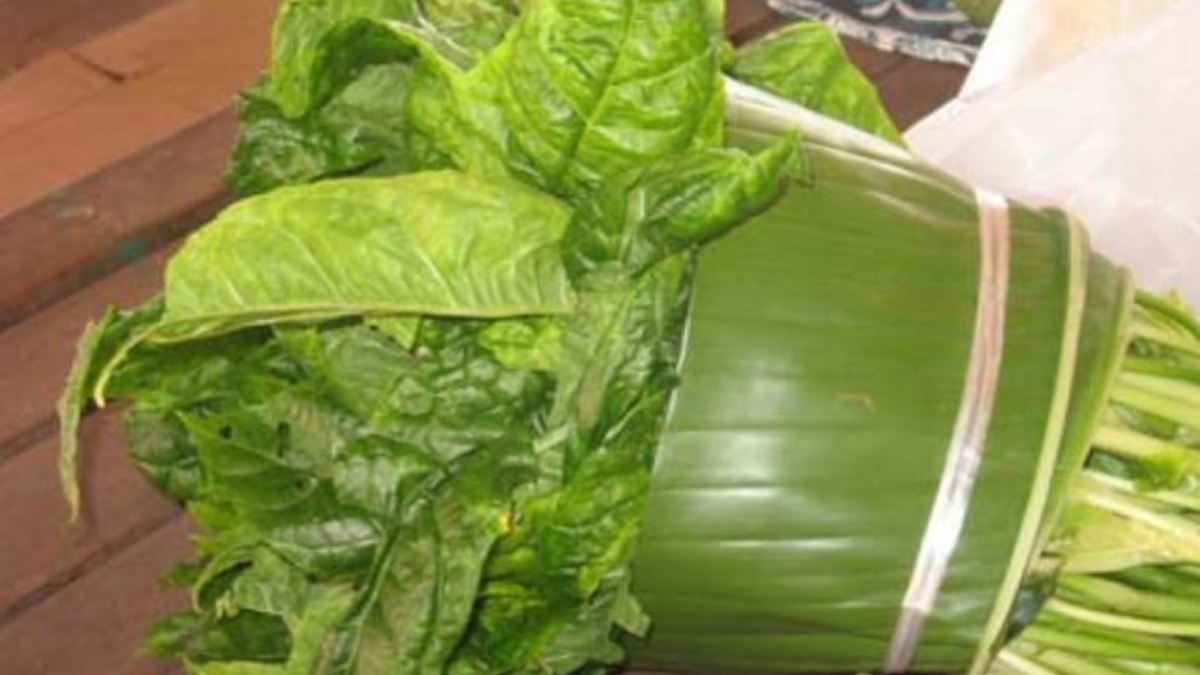Despite its exotic name, bele is a common food plant. It is most commonly grown in tropical areas, including the Pacific Islands. In addition to being used as a vegetable, it is also cooked in coconut milk and fish. Despite its widespread use in the Pacific Islands, bele is easy to grow. It is propagated easily from ten to twenty centimeters long cuttings, which should be half-buried in potting mix and kept moist. Plant cuttings are best placed 60 cm apart.

What is Exactly Bele Leaves?
The leaves of the plant known as bele (Hibiscus Manihot), sometimes called slippery cabbage, aibika, and sunset hibiscus, are frequently used in South Pacific cuisine. It has recently spread over the Pacific, and given its widespread use and popularity, it might benefit elsewhere.
Bele is distinguished by its glossy dark leaves and stunning golden flowers. It can reach heights of 1 to 112 meters, and it is so simple to cultivate could be one of the causes. Cuttings between 15 and 30 cm in length are used for its propagation. The young plant is ready for harvest in just 2-4 months after planting. For one to two years, a healthy plant will produce. The leaves might be of different sizes and shapes, depending on the types. Except for a slightly slick texture that some people dislike, they are delightful to eat. They are incredibly nutrient-dense.
Its widespread consumption could be attributed to its great nutritional content. The leaves have a 5 percent protein content, which is extremely high. Along with considerable amounts of iron, it also has high concentrations of calcium, vitamin C, and vitamins A and C. Therefore, it will be a useful supplement to any diet. The World Health Organization suggests it as a suitable first vegetable for infants. This is because the immature shoots and leaves have very little fiber, making them simple to digest. The use of bele medicines for rashes, constipation, colds and sore throats, childbirth, and fertility are also documented in documents from Papua New Guinea.
What are the Health Benefits of Bele Leaves?
Here are the health benefits of bele leaves:
- This is crucial for developing DNA, RNA, antibodies, blood components, enzymes, muscle, and cell membranes. Although not particularly high, the crude protein content of the Tuvalu sample in the table, according to the nitrogen analysis, is roughly 16 percent, much higher than the levels of other plants growing nearby. The Kiribati bele samples had an average protein content of 20%.
- Important for developing DNA and proteins, immunology, growth, and glucose metabolism. About 600 distinct Zn-containing enzymes and proteins are present in humans.
- The mineral is most crucial for developing and preserving teeth and bones. Additionally crucial to cellular physiology is calcium.
- Magnesium is another mineral found in bele, and it plays a role in the development of bones and the functioning of the muscles and nerves.
What Part of a Hibiscus Plant (Bele Leaves) is Edible?
All parts of Hibiscus sabdariffa are edible: calyxes, leaves, and flowers.
- The calyxes are used to make Hibiscus tea, a tangy Vitamin C-rich delight. They’re also used to make sauces, jams, and other treats.
- The large green leaves pack a tangy punch and can also be used to make tea.
- The branches are covered with colorful yellow flowers. Once pollinated and mature, the flowers form ripe calyxes with a seed pod. While these flowers are a bit smaller than the common Hibiscus varieties used by landscapers, the fact that they form a delightful edible fruit/calyx more than makes up for their size deficiency relative to hibiscus varieties bred purely for show.
How to Grow Edible Hibiscus Plants from Seed?
Given that it is a tropical plant, Hibiscus sabdariffa prefers warm, humid climates. Since we’ve been growing them from seed for approximately ten years, we’ve picked quite a few helpful hints:
Soak Seeds for 24 Hours
Before planting, some sources advise making a hole in the seed’s surface with a fil; we don’t believe the hassle is worthwhile. Instead, give your hibiscus seeds a 24-hour soak in water inside before planting them, and this will make the dense, tough seed coating softer.
Start Indoors
- Sow your pre-soaked hibiscus seeds indoors 6-8 weeks before your last frost date in spring.
- Plant them 1/4″ deep in dampened seed starting mix inside seed starting containers (biodegradable pots or plastic cells).
Use a Heat Mat
To sprout, hibiscus seeds require heat, and ideal germination requires warmer temperatures than the typical indoor temperature of 70°F. Start hibiscus seeds on a heating pad with the temperature set to 80°F for the best and quickest germination possible.
Keep Soil Warm and Damp (Not Wet)
Keep the containers on the heated pad and ensure the soil is moist enough (keep the seed starting mix damp but not soaking wet). The seeds ought to sprout in 10 days.
Place Under Grow Lights
We suggest creating a DIY indoor grow lamp arrangement similar to this one if you’re a serious gardener. Modern, energy-saving windows block far too much sunlight to maintain the health of hibiscus seedlings indoors.
Set your grow light,s so they are about 1-2 inches above the tops of your hibiscus seedlings (if using fluorescent bulbs). The heat mat is currently optional, although keeping the plants warmer will hasten their growth.
Transfer Outside After Last Frost
Before moving your hibiscus seedlings outside, you might need to pot them up in bigger containers. Transplant your hibiscus plants outside into their ultimate position once your last frost date has gone and there are no temps below 40°F.
Give hibiscus sabdariffa plants plenty of space because they can grow to be 6 feet tall and 4 feet broad! Because the branches are susceptible to breaking in strong gusts if they are filled with calyxes, you might also think about planting them inside large, sturdy tomato cages.
How to Cook Bele Leaves?
I hid in the kitchen when I got home. Because I lacked the components for lau law, I chose to try the bele in eggs Florentine the following morning. I cleaned the bele before sautéing some onions and garlic in butter that I had melted in a big pot. I added the bele, and five minutes later, the mass had reduced to about three cups and looked exactly like spinach. It was packaged and kept in the refrigerator by me.
Due to the spinach’s precooked state, the recipe came together quickly. More frequently, we ought to do that.
Ingredients
- 1 pound bele, thoroughly washed
- Four tablespoons of unsalted butter
- ½ medium onion, diced
- One clove of garlic, chopped
- salt and pepper, to taste
- lemon wedge, optional
Directions
- Remove stems from bele leaves and discard.
- Melt butter in a deep pot over medium heat and add onions and garlic.
- Sauté, occasionally stirring, until golden, about 7 minutes.
- Add bele and toss with tongs until leaves are coated with butter/onion.
- Cover and cook for 5 to 8 minutes.
- Season with salt and pepper (to taste).
- Serve with a lemon wedge, if desired.
Conclusion
Bele leaves are employed in South Pacific cuisine, which recently spread to further Pacific regions. It can be recognized by its glossy leaves and stunning golden blossoms. Additionally, it is very nourishing. Its leaves come in various sizes and shapes and are tasty and nutrient-rich. However, be cautious when deciding which types to consume. Before choosing a choice, it is best to investigate the various dietary recommendations for Bele.
Bele (Abelmoschus Manihot), one of Oceania’s most nutrient-dense traditional vegetables, is not widely known in the Pacific. “This native green vegetable can make a significant difference in the diets of Pacific Islanders, who have among the highest rates of diet-related non-communicable diseases worldwide and suffer from vitamin deficiencies.

